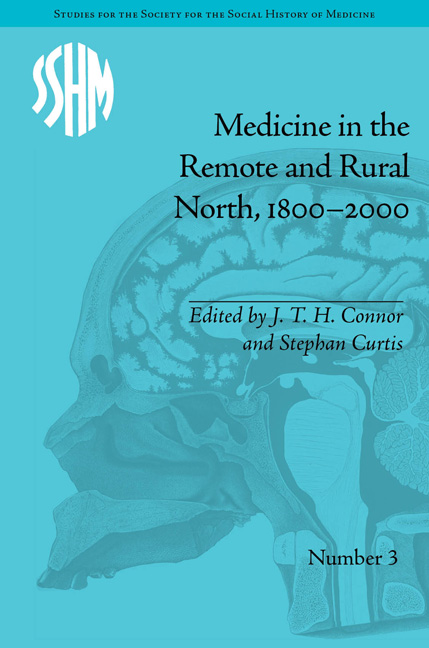Book contents
- Frontmatter
- CONTENTS
- Acknowledgements
- List of Contributors
- List of Figures and Tables
- Introduction: Cores/Peripheries – Rural/Remote: Medicine, Health-Care Delivery and the North
- Part I Remote Medicine and the State
- Part II Doctors and Doctoring in Remote Areas
- Part III Women, Health Care and the Practice of Medicine
- 9 The West Greenlandic Midwives 1820–1920: Mediators between their Compatriots and Danish Doctors
- 10 Delivering Health Care in Rural New Brunswick: Outpost Nursing in the Twentieth Century
- 11 Mother's Medicine: Women, Home and Health in the Peace River Region of British Columbia, Canada, 1920–40
- 12 Call of the Wild: Public Health Nursing in Post-War Lapland
- Notes
- Index
11 - Mother's Medicine: Women, Home and Health in the Peace River Region of British Columbia, Canada, 1920–40
from Part III - Women, Health Care and the Practice of Medicine
- Frontmatter
- CONTENTS
- Acknowledgements
- List of Contributors
- List of Figures and Tables
- Introduction: Cores/Peripheries – Rural/Remote: Medicine, Health-Care Delivery and the North
- Part I Remote Medicine and the State
- Part II Doctors and Doctoring in Remote Areas
- Part III Women, Health Care and the Practice of Medicine
- 9 The West Greenlandic Midwives 1820–1920: Mediators between their Compatriots and Danish Doctors
- 10 Delivering Health Care in Rural New Brunswick: Outpost Nursing in the Twentieth Century
- 11 Mother's Medicine: Women, Home and Health in the Peace River Region of British Columbia, Canada, 1920–40
- 12 Call of the Wild: Public Health Nursing in Post-War Lapland
- Notes
- Index
Summary
In the mid-1920s young Eden Robinson was hand-logging on Philip and Emily Tompkins’ farm at Halfway, a remote Peace River community at the midpoint between Fort St John and Hudson's Hope, when a tree came down on his head. The force of the impact pushed Robinson downward onto a sharp snag which entered his mouth from below. This was a bad bush accident, leaving Robinson with a nasty scalp injury and serious jaw damage. With the nearest doctor and hospital in Pouce Coupe 100 miles away, transportation to medical assistance was out of the question. Alice Summer (née Tompkins), then a child, remembers the young man being carried into the house, placed on the dining-room table, and given hard liquor to dull the pain. Working in consultation with Dr Archibald Watson of Pouce Coupe over the telegraph, Alice's mother, Emily Tompkins, sterilized a moccasin needle with boiled snow, and stitched up the head wound with silk thread. Turning to Robinson's other injuries, Emily used tweezers to remove the wood chips embedded in the roof of his mouth while her husband Philip walked over to the Robinson home for adhesive tape to bind Robinson's lower jaw.
This dramatic story, which has survived well in folk memories of the region, spotlights the healing talents of one lay woman, Emily Tompkins, a war bride who had worked in a greeting-card factory in Bristol, England, before immigrating to a new life on the Canadian frontier.
- Type
- Chapter
- Information
- Medicine in the Remote and Rural North, 1800–2000 , pp. 199 - 214Publisher: Pickering & ChattoFirst published in: 2014



